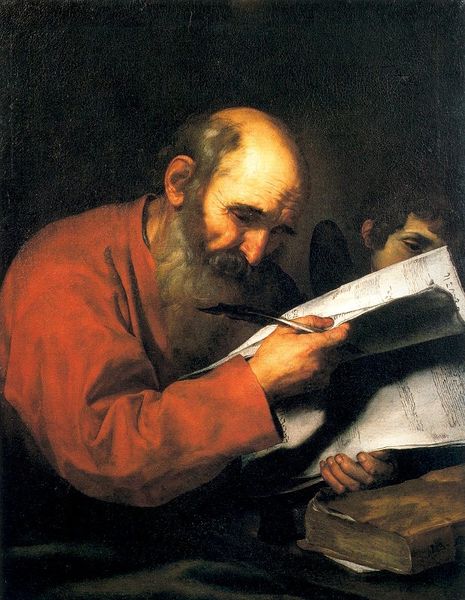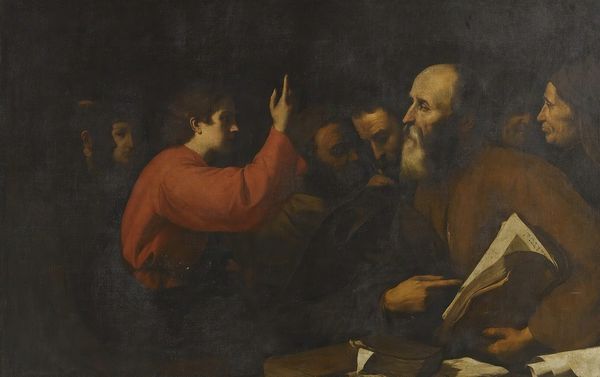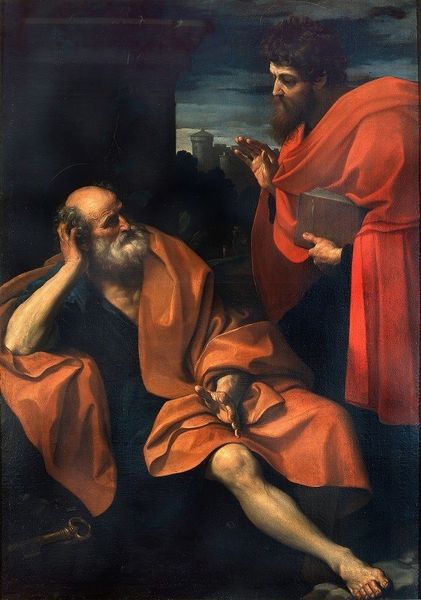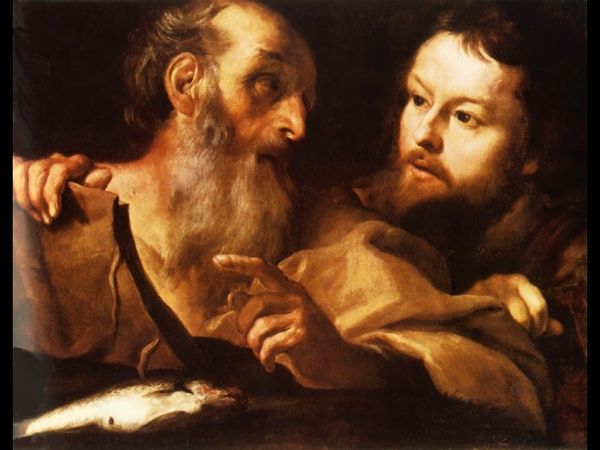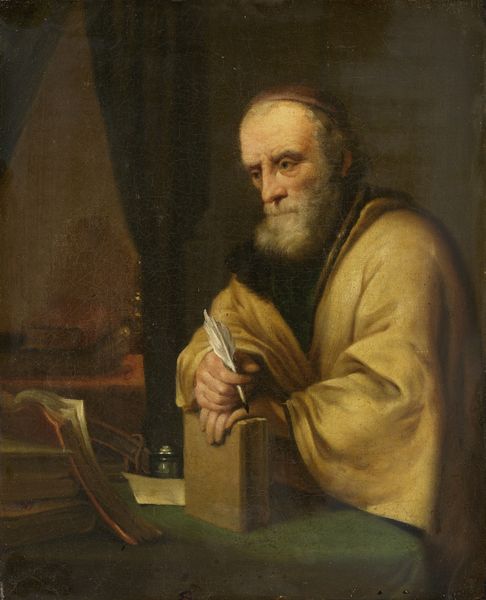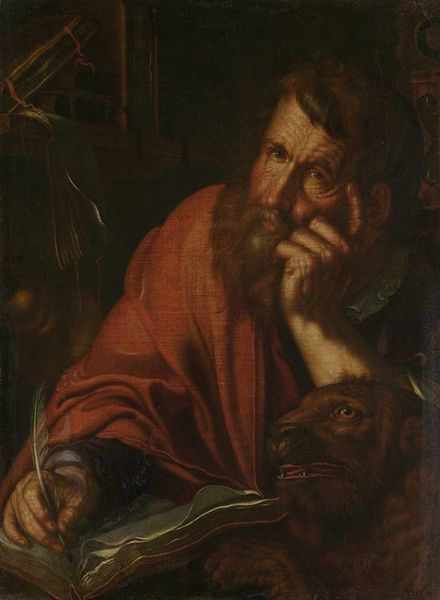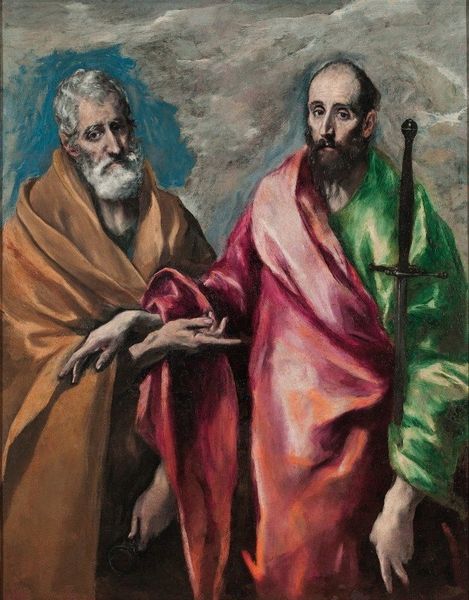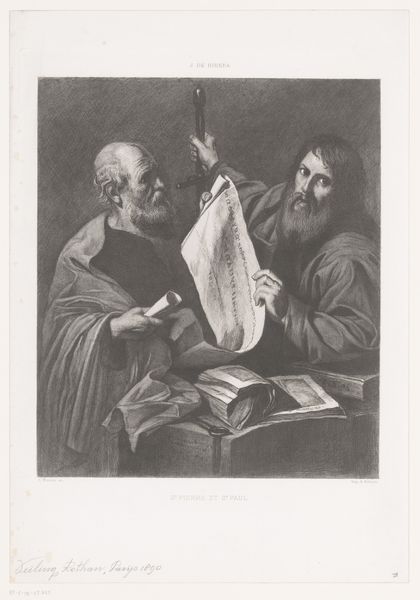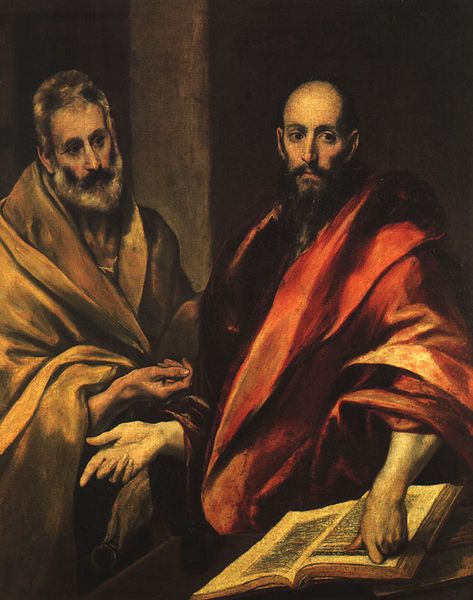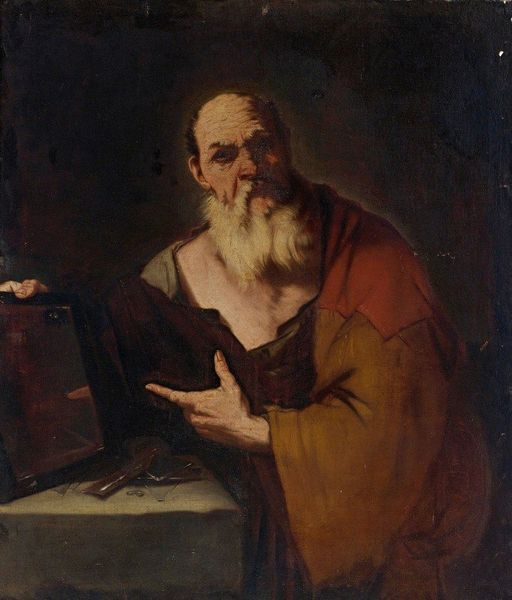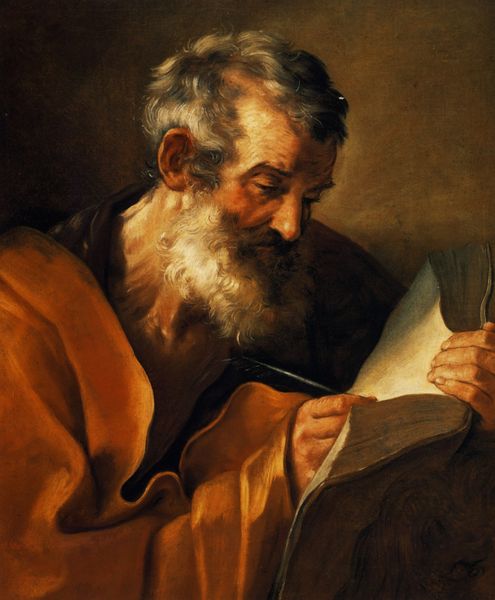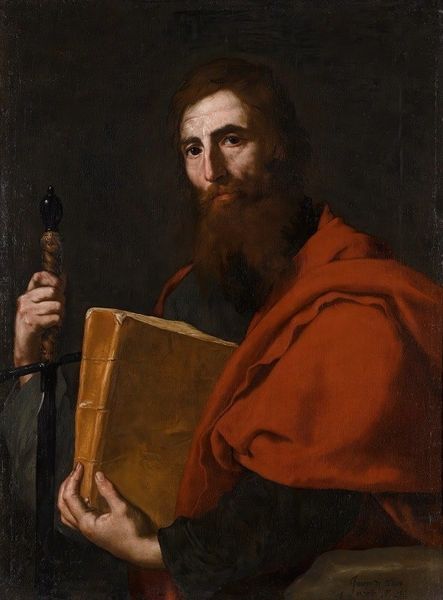
Saint Peter and Saint Paul 1616
0:00
0:00
jusepederibera
Musée des Beaux-Arts de Strasbourg, Strasbourg, France
painting, oil-paint
#
baroque
#
painting
#
oil-paint
#
figuration
#
group-portraits
#
chiaroscuro
#
christianity
#
history-painting
#
christ
Copyright: Public domain
Jusepe de Ribera painted Saint Peter and Saint Paul, sometime before his death in 1652. Ribera worked in Spanish-controlled Naples. Here, the pairing of saints Peter and Paul reflects the Catholic Church's claim to legitimacy as the direct successor to both apostles, but the painting's realism also speaks to a growing interest in the everyday world. Ribera makes the founders of the Catholic church appear as ordinary men and scholars, rather than divine figures. As we examine the painting, we might ask what a painting like this was meant to do. Did the local church commission it to inspire devotion in ordinary worshippers, or was it intended for private contemplation by a wealthy and learned individual? The presence of Hebrew script on the document held by Paul is a detail that art historians could pursue in order to find the patron and the location for which the work was made. The meaning of art is always contingent on its specific social and institutional context.
Comments
No comments
Be the first to comment and join the conversation on the ultimate creative platform.
